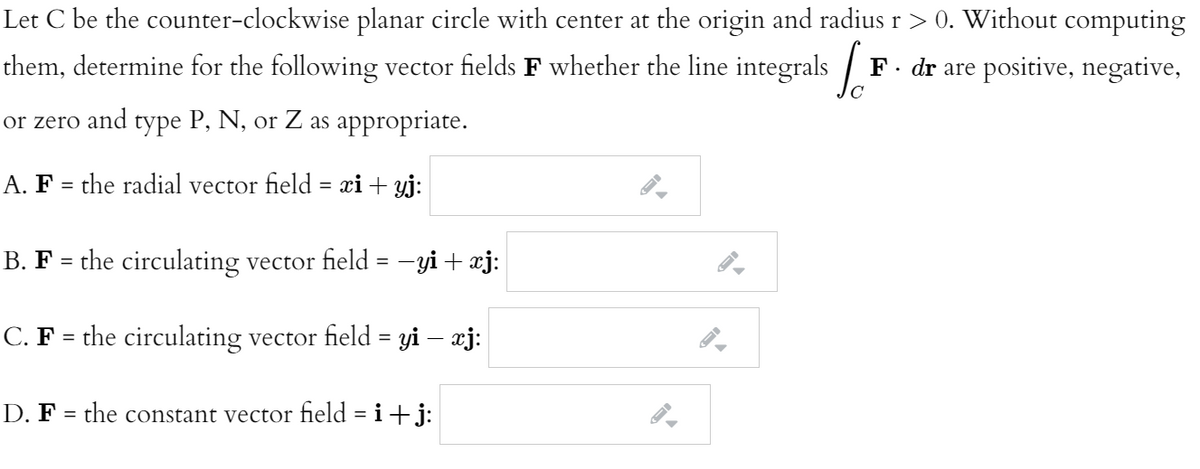Let C be the counter-clockwise planar circle with center at the origin and radius r > 0. Without computing them, determine for the following vector fields F whether the line integrals / 1 F. dr are positive, negative, or zero and type P, N, or Z as appropriate. A. F = the radial vector field = xi+ yj: B. F = the circulating vector field = -yi+ xj: %3D C. F = the circulating vector field = yi – æj: D. F = the constant vector field = i+j:
Arc Length
Arc length can be thought of as the distance you would travel if you walked along the path of a curve. Arc length is used in a wide range of real applications. We might be interested in knowing how far a rocket travels if it is launched along a parabolic path. Alternatively, if a curve on a map represents a road, we might want to know how far we need to drive to get to our destination. The distance between two points along a curve is known as arc length.
Line Integral
A line integral is one of the important topics that are discussed in the calculus syllabus. When we have a function that we want to integrate, and we evaluate the function alongside a curve, we define it as a line integral. Evaluation of a function along a curve is very important in mathematics. Usually, by a line integral, we compute the area of the function along the curve. This integral is also known as curvilinear, curve, or path integral in short. If line integrals are to be calculated in the complex plane, then the term contour integral can be used as well.
Triple Integral
Examples:


Trending now
This is a popular solution!
Step by step
Solved in 2 steps









